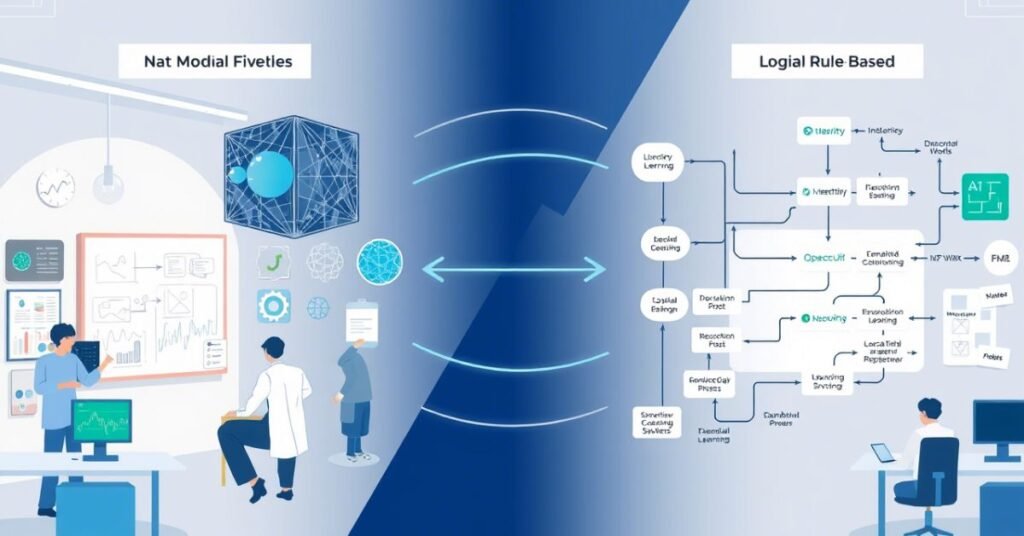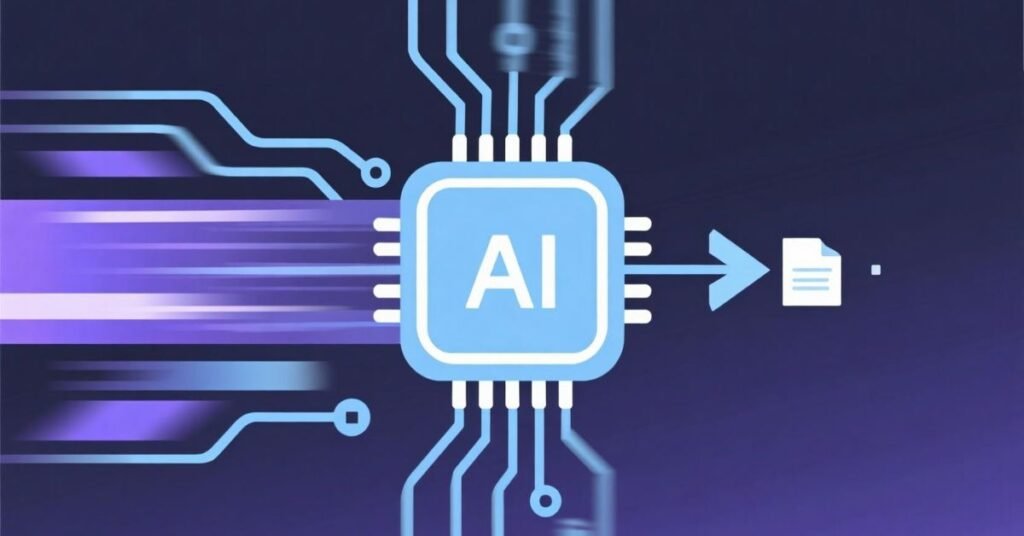Artificial Intelligence (AI) is changing how we live, work, and solve problems. From smartphones to hospitals, AI helps in many ways. But AI is not perfect. It needs better tools, clean data, and smart models to get real results. If you’re wondering how to improve AI, you’re definitely not the only one. Many people want AI to be faster, smarter, and more accurate.
Businesses want better outcomes. Developers want powerful systems. Users want fewer mistakes. This article shows how to improve AI step by step in easy language. You don’t need to be an expert. With simple actions like cleaning data and tuning models, you can see big results. Let’s explore the top ways to make AI work better.
Pick the Right Algorithms and Tune Them Well

Choosing the right algorithm is one of the most important steps in how to improve AI. Different tasks need different models. For example, classification, regression, and text processing all use different algorithms. You must understand which algorithm works best for your task.
Once you pick the model, the next step is tuning it. Tuning means adjusting settings such as learning rate, batch size, and how many layers the model has. These settings are called hyperparameters. To tune them well, you can use grid search, random search, or Bayesian optimization. These methods help you find the best values that make your model perform better.
Another smart method is transfer learning. If you don’t have enough data, use a model trained on similar data and adjust it for your task. This saves time and gives better results. Researchers have proven that tuning and transfer learning improve accuracy and reduce errors. So, if you want to know how to improve AI, start with smart model selection and proper tuning.
Improving Data Quality and Taking a Data-Centric Approach
If you ask experts how to improve AI, they’ll tell you: focus on data first. AI learns from data. If the data is messy, the model fails. That’s why you need data-centric AI. It means you spend time fixing the data before training the model.
Good data starts with collection. Gather many examples that show different cases. Clean the data by removing errors, duplicates, and missing values. Label your data carefully. Wrong or inconsistent labels confuse your model. You can also use data augmentation to add more examples by creating new but realistic data.
Here is a helpful table to guide your data process:
| Step | What to Do |
| Collect | Get varied and complete examples |
| Clean | Fix errors and remove duplicates |
| Label | Use clear and accurate tags |
| Augment | Add synthetic but useful data |
| Govern | Set ethical rules and protect privacy |
By following these steps, your AI system will learn better. Models trained on clean, rich, and fair data perform far better than those trained on poor data. That’s why fixing your data is a major part of how to improve AI.
Scale Models, Data, and Compute Resources Together

One of the easiest ways to improve AI is to scale everything together: the model size, the training data, and the compute power. Bigger models can learn more. More data helps the model understand better. And faster computers train models quickly. But you must balance all three. Just making the model bigger won’t help if your data is weak or your computer is slow.
Scaling also increases cost. So, you need to scale smartly. Use cloud services to manage large models. Use GPUs or TPUs for fast training. If you use too much computing power without good planning, you waste time and money.
Experts say scaling gives high returns early, but after a point, the results slow down. The key is to find the right level for your task. When you balance model size, quality data, and compute power, your AI becomes much more effective. That’s why this is a proven way to improve AI.
Use Post-Training Enhancements Instead of Full Retrain
Retraining models from scratch is expensive. But luckily, you can still boost your AI without doing that. Post-training enhancements are methods that improve your model after training. These techniques are low-cost and high-impact.
Some popular ways include prompt scaffolding, tool use, self-consistency, and solution selection. You can also add data generation to make your model more robust. These methods don’t need full retraining, but they often give results just as good.
For example, using a tool alongside a language model helps it give better answers. Prompt scaffolding guides the model step-by-step to reduce errors. These tricks are especially helpful when the budget or computing is limited.
So, if you’re looking for how to improve AI without high costs, post-training methods are a smart and efficient solution.
Build Hybrid and Blended AI Architectures

A great way to boost performance is by combining different types of AI models. This approach is known as a hybrid or blended architecture. You use different models for different tasks, then blend their outputs. That gives better accuracy, flexibility, and reliability.
For example, Small Language Models (SLMs) can be combined with knowledge graphs to answer technical questions better. Neural networks can work effectively alongside decision trees and expert systems. You can also use ensemble learning, which combines many models and averages their results.
Blended AI systems learn from each model’s strengths. One model might be fast, another might be accurate, and a third might be good at specific domains. By blending, you reduce their weaknesses.
If you’re wondering how to improve AI, this is a modern and effective way. It gives you the best of many worlds in one system.
Leverage Distributed Systems and Efficient Infrastructure
Modern AI needs powerful machines. To train big models and handle lots of data, use distributed systems. These spread the work across many computers. That way, you get results faster and with less stress on one system.
Also, use efficient infrastructure. This involves using advanced hardware such as GPUs, TPUs, and AI accelerators. Use load balancing, caching, and containerization to make everything run smoothly.
You can also use cloud platforms that offer auto-scaling. This means your system grows or shrinks based on the load. Efficient infrastructure helps avoid slowdowns, reduce power use, and save costs. If you want real answers on how to improve AI, this is a key step. Infrastructure may not be visible, but it decides how well your AI works.
Focus on Human-Centered and Ethical AI Practices
AI works best when it serves people. Human-centered AI means building systems that help humans, not replace them. It follows user needs and supports real work.
Start by training your teams. Assign AI champions in each department. These people guide the use of AI, ensure it’s ethical, and link it to real goals. Use governance frameworks to check how your AI makes decisions.
Ethical AI also means checking for bias and explaining results. Users should understand how and why a model answers. Fairness, transparency, and human oversight are core parts of this approach.
If you really care about how to improve AI, focus on people. Align AI with real human needs, and your system will be stronger and more trusted.
Speed Up AI with Compression and Optimization

AI systems often become slow and large. But there are many smart ways to make them faster without losing quality. Use compression techniques like quantization and pruning. These reduce model size and memory use.
Deploy your model near special hardware, like edge devices or optimized servers. Use inference-optimized chips that give fast responses. Add caching layers to avoid doing the same work again and again.
These tricks cut down latency and cost. So, when time and budget matter, this is how to improve AI smartly. Your system becomes fast, light, and efficient.
Continuous Learning and Error-Driven Refinement
AI doesn’t stop learning after launch. You must keep it updated. Use feedback loops to improve results over time. Track errors and fix them with small updates. This is called error-driven refinement.
Also, watch for data drift. That means your data changes over time. If you don’t update your model, it becomes less accurate. A good way to fix this is by setting up continuous learning pipelines. These update your model regularly with new data and feedback.
This method ensures your AI stays fresh, useful, and correct. When thinking about how to improve AI, this is a long-term must.
Emerging Directions: Brain-Inspired and Emotional AI

The future of AI is exciting. New research is inspired by how the human brain works. Scientists are building 3D neural networks that can think and remember more like humans. These models use feedback loops to make better decisions.
Another new area is emotion-aware AI. These systems detect user emotions through voice, text, or facial signals. They adapt their responses to match the user’s mood. That makes AI feel more human and helpful.
These new directions show deep innovation. If you want to prepare for the future and truly master how to improve AI, keep your eye on brain-like and emotional models.
Summary Table: How to Improve AI
| Strategy Area | Key Actions |
| Algorithm & Tuning | Pick smart models, tune them, and use transfer learning |
| Data Focus | Clean, label, augment, and govern data |
| Scaling AI | Grow model size, data, and compute in balance |
| Post-Training Boosts | Use prompts, tools, and scaffolds instead of retraining |
| Hybrid Architecture | Blend SLMs, graphs, and ensemble methods |
| Infrastructure | Use accelerators, caching, and load balancing |
| Human-Centered AI | Align with ethics, business needs, and oversight |
| Fast AI | Compress models and deploy near optimized hardware |
| Continuous Learning | Improve with feedback and data updates |
| Future Trends | Explore brain-like and emotional intelligence |
FAQs
How often should I retrain an AI model?
Retrain when your data changes or the model performs poorly. For better results, use feedback updates regularly.
Can AI improve without full retraining?
Yes. Use post-training tools and scaffolding to boost results without full retraining.
Why is data so important in AI?
AI learns from data. High-quality data leads to stronger models, fewer mistakes, and more accurate outcomes.
What is ensemble learning?
It’s a way to combine many models into one. This helps your system become more accurate and more reliable.
What makes AI ethical?
Governance, fairness, transparency, and human control keep AI safe, useful, and trusted
Nimra Kanwal is an SEO expert helping businesses grow through strategic content and smart search optimization. She writes for Spectraapex and contributes guest posts to top digital blogs.

